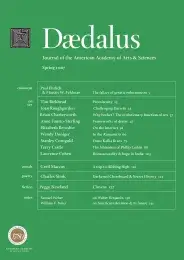Promiscuity
Darwin’s theory of natural selection is so widely known it is almost a cliché, despite continually being misunderstood. His concept of sexual selection is less well known but no less important. Darwin developed the idea of sexual selection to account for the dramatic differences that often exist in the appearance and behavior of the sexes. The reason for these differences, he said, was competition for, or choice of, sexual partners. Typically, males compete among themselves for females, hence their larger body size and their weapons, such as antlers and spurs. Females, on the other hand, typically choose among males on the basis of the males’ elaborate coloration, extravagant ornaments, or remarkable vocal repertoires.
One integral aspect of Darwin’s concept of sexual selection was male promiscuity–the fact that, in many animals, males achieve high reproductive success by copulating with several different females. At the same time as he accepted male promiscuity as the norm and as an important component of sexual selection, Darwin regarded females as sexually monogamous and faithful to a partner for at least a single breeding attempt. By doing so he automatically assumed that sexual selection ceased once an individual of either sex had acquired a mating partner. But Darwin knew it wasn’t true that females were sexually monogamous, for in his various writings he referred to instances in which females had received sperm from more than one male. For example, in The Descent of Man, and Selection in Relation to Sex (1871), Darwin refers to a case his cousin William Darwin Fox recounted to him, of a female domestic goose that copulated with both a male domestic goose and a Chinese goose and hatched a brood of very obvious mixed paternity. Despite such clear evidence to the contrary, though, Charles Darwin stuck firmly to the story of female monogamy.
There are several reasons for this. First, although it was perfectly respectable to discuss sexuality, fertilization, and promiscuity among plants, it was less appropriate for a Victorian gentleman to discuss the sexual habits of female animals, including humans. Second, Darwin’s grandfather, Erasmus Darwin, had been enthusiastic about reproduction, advocating sex for his hypochondriac female patients and himself siring several illegitimate offspring. At exactly the time Charles was writing Descent another illegitimate descendent of Erasmus had been discovered–hardly an opportune time to be discussing promiscuity. Third, and most important, Charles did not want to offend the womenfolk in his life, especially his wife Emma and daughter Henrietta. Etty, as she was known, helped proofread and check her father’s writings but also acted as his censor, striking out anything she didn’t approve of with her blue crayon. She did precisely that to Charles’s brief biography of Erasmus Darwin–deleting the reference to Charles’s grandfather’s “ardent love of women.” We get a further feel for what Charles was up against when we discover that, in later life, Etty tried single-handedly to remove the eponymous fungus Phallus impudicus from the British countryside because she thought it might have a bad influence on the maids.1
. . .
